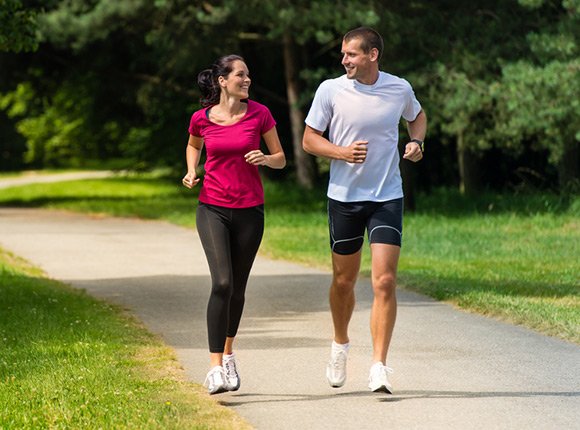
Regular physical exercise is key to effective diabetes treatment. It helps control cholesterol, lowers high blood pressure and aids in general well being. In fact, structured interventions leading to weight loss can reduce type 2 diabetes risk by 58%, according to an article by the National Center for Biotechnology Information.
To reverse diabetes, a healthy diet coupled with result-oriented exercise is recommended. However, the activities must be tailored to meet each individual’s needs.
Benefits of Physical Exercise
At least 30 minutes of daily activity can bring in the following changes in a diabetic person:
- Toned and lean muscles, with a moderate amount of weight loss.
- Energy boost to keep you going through the day.
- Undisturbed and sound sleep at night.
- Bones are much stronger, reducing the risk of osteoporosis.
- Blood pressure and heart rate come under control.
- Better protection from several diseases.
- A cheerful and improved mood.
- Increased levels of good cholesterol.
- Sugar levels are stable and in control.
- Improvement in insulin sensitivity.
So, first check the type 2 diabetes causes and pick exercises that are enjoyable, otherwise you might end up giving up on them after a while.
How Does Exercise Help?
Strength training and aerobics are the most common forms of exercise recommended by diabetes specialists. These make your body sensitive to insulin. With these exercises, the muscles make great use of insulin to get glucose during and after a workout. When the muscles start to contract, the cells can take up glucose even if insulin is not available. In most cases, it starts to show effect within 24 hours.
Aerobic Exercise
For type 1 diabetes, regular aerobics can improve lipid levels, lower insulin resistance, increase endothelial function and promote cardiovascular fitness. For type 2 diabetes, moderate aerobics can reduce triglycerides and A1C. Additionally, lung function, immune functions and oxidative enzymes are increased.
Strength Training
Resistance type exercises can be beneficial for healthy and strong bones, efficient muscles, body composition, muscle mass, insulin sensitivity, fat mass, bone mineral density, lipid profile and even mental health. Several causes of type 2 diabetes can be reversed with daily strength training for 30 minutes. To get the full benefits, know how to use all the equipment properly.
Simple Exercises
Stretching can help improve motion around the joints, while balance training can keep older adults from falling. Effective yoga poses can improve lipid levels, body mass and glycemic control in people with type 2 diabetes. You can also opt for the unconventional tai chi training, which will improve symptoms of neuropathy and overall body balance. Balance exercises can increase joint mobility, which is much needed for senior citizens. Lastly, light walking after each meal can check body weight and induce long term health benefits, like reduced obesity.
Before starting off with any exercise regimen, consult your doctor to know if it is medically safe. Refrain from rigorous training, resulting in excessive water loss. In case of dizziness, sudden weakness or nausea, stop exercising immediately.